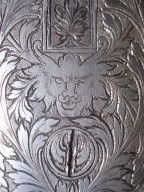| beleg2 |
| (.375 member) |
| 20/09/08 11:22 PM |

|
|
|
It is a copy of an old post by 400 NitroExpress.
Sorry but I reread it and I much like to copy and paste:
"The .450 Nitros were never banned, but the order gradually came to be erroneously interpreted that way over time by many bureaucrats
That version [that the .450 Nitros were entirely banned] has been parroted endlessly, but that doesn't make it true.
The hotspot in India at the end of the 19th century was the Northwest Frontier, the border between British India and Afghanistan, as the same border between Pakistan and Afghanistan remains a hotspot today. At the time, the Afridi tribesmen were raiding military stockpiles for rifles and ammunition, and using them to shoot up the place. Like bureaucrats today, The Right Honourable The Governor in Council for the Bombay Presidency had a typical bureaucrat's solution. In March, 1899, he issued an order banning the importation of rifles and ammunition in .303 British, .577/.450 Martini Henry, and .577 Snider - the three military rifles and cartridges then stockpiled in India - in a misguided attempt to deny arms and ammunition to the rebels. Further, residents of India of British and European descent, whether British subjects or not, were specifically exempted from the order. Such residents were permitted to import rifles in the banned calibers, together with a quantity of ammunition suitable for personal use. The reference to the Foreign Office in the link above is simply fluff, as the Foreign Office had no authority over India. British authority over India was exercised directly through the crown's Viceregal, and the Secretary of State for India, Lord Hamilton, neither of which chose to meddle in this affair.
The ban was aimed at the native Indian population, but the Maharajas were a huge source of revenue to the British gun trade. The trade didn't care much about the other two, but the .303 ban was a huge problem. The .303 was then to the British what the .30-06 has been to us for the last 100 years. They got busy introducing replacement cartridges for it for the Indian market. The .400/.350, .350 No. 2, the four .400/.360s, and Holland's .375 2 1/2" Flanged Nitro Express were all introduced as .303 replacements between 1899 and 1901. BSA also picked up the 8mm BSA, also called the .315 Mauser, for the previously .303 caliber Lee-Enfield sporting rifles that they manufactured for the Indian market.
With the .303 issue then resolved, that should have been the end of it. Unfortunately, Indian civil service bureaucrats gradually began to interpret the order as prohibiting ALL .303, .450, and .577 bore rifles. This interpretation was clearly illegal, as the Governor's order was very specific, but the trade couldn't get in front of the problem for some reason. Because the import of most of the .450 sporting ammunition was gradually being strangled due to misinterpretation of the order, a crisis in the availability of ammunition for them in India resulted, which peaked in 1906. To the trade, the only way to cut the Gordian knot seemed to be what was done with the .303.
Eley Brothers first drew the .500/.465 NE, .475 3 1/4" NE, and the .475 No. 2 NE in January, 1907. In February, the original version of the .475 No. 2 was discarded, and a new version drawn, which Eley retained for proprietary purposes, and another version of it was drawn for Jeffery's proprietary use. By that time, Holland had picked up the .500/.465 as proprietary, and Cogswell & Harrison the .475 3 1/4". Westley Richards introduced their .476 somewhat later.
It's true that the .450 bore was banned in the Sudan, but it certainly never was in the remainder of British Africa. In fact, the three .450 Nitros remained very popular throughout the remainder of British territory in Africa for a long time after. Theodore Roosevelt used a Holland .450 on his famous safari in 1910, and Kermit used a Rigby .450. Many famous East African professionals continued to use .450s for as long as Kynoch continued to make the ammunition, including Philip Percival, who ordered a new pair of Lang .450 No. 2s in 1927.
For the British gun trade, the Indian rifle market was huge. In comparison, the African market was never more than a small sideshow, and the Sudan a tiny segment of that. The ban in the Sundan was too insignificant to matter to them."
Thanks
Martin